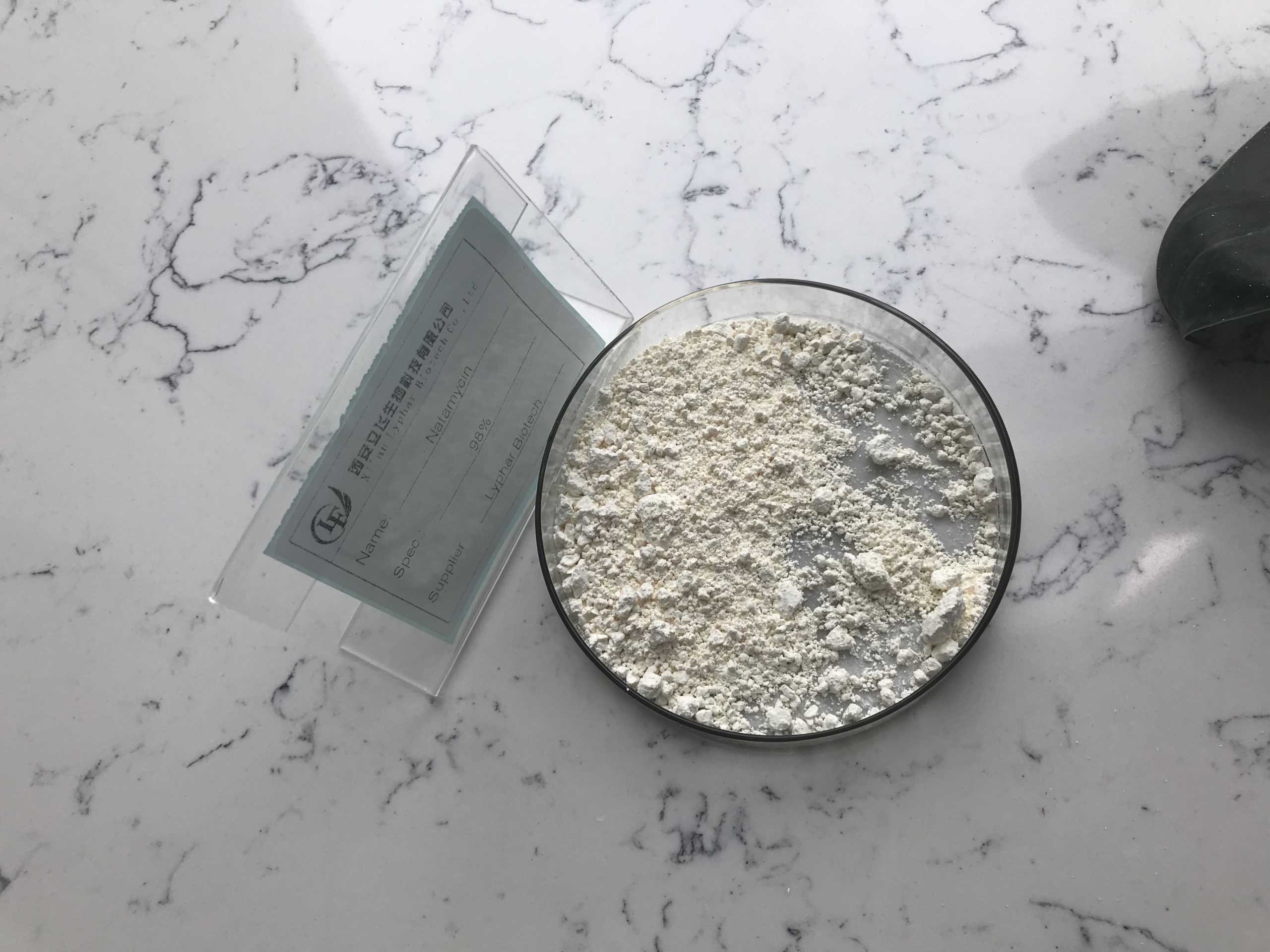Natamycin is a natural antifungal agent used in the food industry to prevent the growth of mold and yeast on various food products. It is particularly effective in inhibiting the growth of fungal species like Aspergillus and Penicillium, which are common contaminants in many types of food.
The process of producing natamycin involves several steps:
- Isolation of Natamycin-Producing Strain: Natamycin is produced by certain strains of bacteria, most notably Streptomyces natalensis. The first step is to isolate and select a suitable strain of these bacteria that can produce natamycin efficiently.
- Inoculation and Fermentation: The selected bacterial strain is cultured in a suitable medium under controlled conditions. Fermentation typically occurs in large bioreactors. During fermentation, the bacteria produce natamycin as a secondary metabolite.
- Extraction: After fermentation, the culture broth is processed to separate the natamycin from the bacterial cells and other impurities. This is usually done through a combination of filtration and extraction processes.
- Purification: The extracted natamycin undergoes purification to remove any remaining impurities. This can involve processes like precipitation, chromatography, and filtration to obtain a highly purified form of natamycin.
- Formulation: The purified natamycin is then formulated into a suitable product for its intended use. In the food industry, natamycin is often produced as a powder or a liquid solution. The formulation may include carriers or stabilizers as needed.
- Quality Control: Stringent quality control measures are implemented to ensure that the final product meets the required standards for purity and effectiveness. This includes testing for potency, microbial contamination, and other quality parameters.
- Packaging: Once the natamycin product passes quality control tests, it is packaged into containers suitable for distribution and use.
- Distribution and Use: The final natamycin product is distributed to food manufacturers and processors. It is added to various food products, such as cheese, dairy products, and baked goods, to prevent the growth of molds and yeasts that can spoil the food.

Natamycin is generally recognized as safe (GRAS) when used in accordance with approved guidelines and dosage levels. It is an effective and safe preservative commonly used in the food industry to extend the shelf life of a wide range of products.
Applications of Natamycin
Natamycin is a natural antifungal compound that is commonly used in the food industry and pharmaceuticals for its preservative properties. Its primary application is as a food preservative, and it is generally recognized as safe (GRAS) by regulatory agencies such as the U.S. Food and Drug Administration (FDA). Here are some common applications of natamycin:
- Cheese Production: Natamycin is widely used in the cheese industry to inhibit the growth of molds and yeasts on the surface of cheese. It helps extend the shelf life of cheese and prevent spoilage without affecting the flavor or texture.
- Baked Goods: Natamycin can be applied to the surface of baked goods, such as bread and cakes, to prevent the growth of mold and extend their freshness.
- Meat and Poultry: It is sometimes used as a coating on the surface of meat and poultry products to prevent the growth of spoilage microorganisms.
- Dairy Products: Natamycin is also used in dairy products like yogurt and sour cream to prevent yeast and mold growth on the surface.
- Beverages: In some cases, it is used in beverages to inhibit the growth of spoilage organisms and extend the product’s shelf life.
- Pharmaceuticals: Natamycin has antifungal properties and is used in some pharmaceutical formulations to treat fungal infections, particularly those affecting the eyes, such as fungal keratitis.
- Cosmetic Products: It can be found in some cosmetic and personal care products as a preservative to prevent the growth of harmful microorganisms.
- Agriculture: Natamycin has been used in agriculture to control fungal diseases in crops and as a fungicide in horticulture.
It’s important to note that natamycin is generally considered safe when used as directed and within recommended concentrations. However, it’s crucial to follow regulatory guidelines and limitations on its use, as excessive or inappropriate use may lead to concerns about resistance development or potential side effects. Always consult with relevant regulatory authorities and industry guidelines when using natamycin in specific applications.
